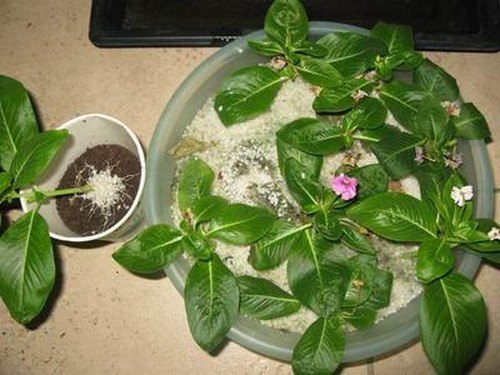Sowing and propagation techniques of potted Catharanthus roseus
Catharanthus roseus has 750 seeds per gram, and the optimum temperature for germination is 18-24 ℃. It can be sowed in spring in April, and the mixed soil of rotten leaf soil, culture soil and fine sand can be disinfected by sowing Pansheng, and germinate 14-21 days after sowing. After emergence, at noon when the light is strong and the temperature is high, shade should be added for 2-3 hours. When the seedling is 5 cm tall and has 3 pairs of true leaves, it can be potted.

1. Seed collection time:
The ripening period of Catharanthus roseus fruit is different due to different flowering time, so the seeds should be picked along with ripening. After the fruit is ripe and the color turns black, the skin is easy to crack and lose the seeds, so it is necessary to collect seeds in time. When you see the pericarp yellowing and can vaguely reflect the black seeds inside, it should be harvested.
2. Sowing time:
The suitable temperature for seed germination is 20-25 ℃, which is usually sown and propagated from March to May, and is cultivated for more than one year. In order to bloom early, the seedlings can be sowed and raised in the greenhouse in early spring. Under the environment of 20 ℃, the warm spring can be moved to the open field for cultivation.
3. Seedbed preparation:
The nursery bed should choose a place with high and cool terrain, facing south to the sun and good drainage. The matrix is best prepared with peat + perlite according to 3 ∶ 1, or rotten leaf soil, poured thoroughly with 500 to 600 times carbendazim solution, slightly dried, loosened and leveled the land to make a 1.2m wide border surface.
4. Sowing technology:
Sow seeds with sowing method, about 1000 seeds per square meter. Cover the seeds with fine sand after sowing, do not make the seeds see the light directly, pour enough water with a fine spray pot, cover with a thin film or grass curtain to keep the soil moist, and the seedlings can emerge in 7 days and 10 days. Remove the film or grass curtain after emergence and gradually increase the light. The growth was slow in the seedling period and faster when the temperature increased. It takes time to grow. In order to prevent Catharanthus roseus quenching disease, 800 times chlorothalonil or methyl topiramate should be sprayed once a week for 2 to 3 weeks.
Time: 2019-06-11 Click:
- Prev

Propagation methods of Catharanthus roseus
Catharanthus roseus has a long flowering period, beautiful colors and beautiful posture, and the varieties cultivated in recent years are getting bigger and bigger, so it is very suitable to be a bonsai ornamental plant, which has an unexpected effect in home layout. Catharanthus roseus prefers warm, sunny and moist, fertile sandy loam. In hot summer, it is not suitable to be exposed to strong light.
- Next

Cutting Seedling technique of Catharanthus roseus
The cuttings of Catharanthus roseus are usually cut in spring or early summer, with a length of 8 cm to 10 cm, cut off the lower leaves, leave the top 2-3 pairs of leaves, insert them into the sand bed or rotten leaf soil, keep the soil slightly moist, room temperature 20-24 ℃, and rooting 15-20 days after cutting. Most cuttings are carried out from April to July.
Related
- Fuxing push coffee new agricultural production and marketing class: lack of small-scale processing plants
- Jujube rice field leisure farm deep ploughing Yilan for five years to create a space for organic food and play
- Nongyu Farm-A trial of organic papaya for brave women with advanced technology
- Four points for attention in the prevention and control of diseases and insect pests of edible fungi
- How to add nutrient solution to Edible Fungi
- Is there any good way to control edible fungus mites?
- Open Inoculation Technology of Edible Fungi
- Is there any clever way to use fertilizer for edible fungus in winter?
- What agents are used to kill the pathogens of edible fungi in the mushroom shed?
- Rapid drying of Edible Fungi

